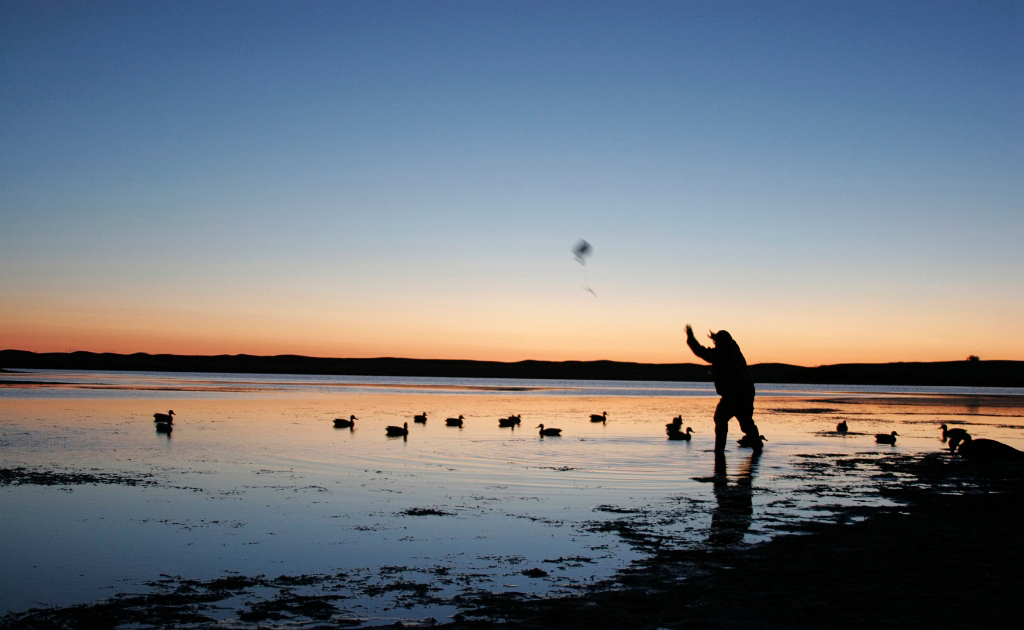Understanding Waterfowl: Using Data to Determine Factors that Influence Hunter Success
Waterfowl population size, productivity, and the influence on hunting seasons
Waterfowl population size, productivity, and the influence on hunting seasons
By Mike Brasher, Ph.D, Ducks Unlimited Senior Waterfowl Scientist

When contemplating ingredients for a successful waterfowl hunting season, it seems logical to begin with the annual waterfowl breeding population estimate. After all, everything else being equal, larger populations in the spring should mean more birds on the wing, and over decoys, later in the year. The problem is, though, everything else is never equal, and numerous factors invariably combine to influence the number of birds in the fall flight and how they distribute across the landscape. Considering the additional causes of variation among the success of individual hunters, we begin to see that forecasting the upcoming waterfowl season is somewhat akin to a game of chance.
Fortunately, long-term data collection by waterfowl managers provides an opportunity to explore how some of these factors may influence waterfowl hunting seasons. For example, researchers in Illinois analyzed over 20 years (1981-2000) of data on hunter success, measured as daily harvest per hunter, at state Wildlife Management Areas (WMAs) to investigate the relative influence of 13 variables representing environmental and population-level factors. Their analysis revealed that hunter success increased with later closing dates of the waterfowl season (latest closing date during the study was December 27), larger breeding populations (for mallards), greater abundances of mallards within five miles of the WMAs, and decreases in average daily low temperature. Interestingly, only one of these variables was of direct management control (season closing date), while the other three reflected habitat and environmental conditions that operate at larger scales across space and time. This begs the question, what can we learn about factors influencing hunter success from additional data collected across these larger scales? We thought it would be informative to explore some of these data ourselves.
Although a comprehensive analysis of hunter success would necessarily include variables related to the effects of weather, habitat conditions, and local scale factors, we chose to keep this analysis simple, focusing only on a few notable demographic characteristics of duck populations. Specifically, we examined relationships between hunter success and breeding population size, annual productivity, and estimates of the fall flight, as these are often key points of discussion among waterfowl hunters and managers. Because it yields the most abundant data, this analysis was limited to mallards and covered the years 2002-2017. Data on breeding population size and fall flight indices were obtained from the U.S. Fish and Wildlife Services annual Waterfowl Population Status Report. For a measure of productivity, we used the number of juveniles to adults (i.e., age ratios) in the annual harvest, whereby a higher ratio of juveniles to adults would indicate greater productivity for a given year. Age ratio data were obtained from the annual Parts Collection Survey, which uses a sample of hunter-harvested duck wings to determine the species, age, and sex composition of the harvest. Finally, we used two different indices of annual hunter success, both measured at the state level - total state harvest and number of ducks harvested per hunter.
The importance of annual population characteristics to hunter success was examined using simple correlation analysis, which essentially measures the relationship between two separate variables. We limited our analysis to areas within the Central and Mississippi Flyways, and we further examined if these relationships differed between terminal wintering areas (Arkansas, Mississippi, Louisiana) and areas on southern portions of the breeding grounds (North Dakota, South Dakota, Minnesota).
After churning through these calculations, our investigation found only one instance where a population-level characteristic was positively related to annual hunter success. For the combined states of Arkansas, Mississippi, and Louisiana, total mallard harvest tended to be greater in years when there was a higher ratio of juveniles to adults in the fall population. Upon reflection, this is perhaps not surprising, as we know that juvenile birds are more vulnerable to harvest than adults, and in years with few juveniles, the adults that do make it south would have at least two hunting seasons under their wings, providing them ample opportunities to become educated on telltale signs of the tactics employed by eager hunters across the landscape. Thus, achievement of unusually great success at southern latitudes seems to be dependent on a good hatch that yields a large population of nave birds. Indeed, this is a phenomenon to which snow goose hunters can attest all too well, regardless of geography, and it makes some sense that it should extend to ducks at some level. That this relationship was not detected at northern latitudes likely relates to the fact that some production will occur every year, and hunters at northern latitudes naturally get first crack at these young birds. Plus, adult birds are just coming out of a time when they havent been shot at for seven months, and they too are probably a bit less cautious during the early stages of fall.
With perhaps exception of actions employed at very local scales, waterfowl managers have limited control over our hunting success. While daily weather conditions, longer-term winter severity, local disturbance, habitat quality, or our skill as hunters play large roles in defining our daily and annual success, our sustained hunting success has always hinged on the existence of productive habitats throughout the range over which waterfowl travel. Fortunately, robust data collection efforts, science-based understanding of waterfowl populations, and extensive experience conserving habitats across North America has positioned the waterfowl community well to preserve these important habitats and the waterfowl populations that depend on them.
Ducks Unlimited uses cookies to enhance your browsing experience, optimize site functionality, analyze traffic, and deliver personalized advertising through third parties. By continuing to use this site, you agree to our use of cookies. View Privacy Policy